Surfing in rough conditions is an experience unlike anything else. The thrill of riding strong waves, the adrenaline coursing throughout your body, and the power of nature’s forces at play can be a memorable experience.
However, rough waters carry serious risks that require respect, preparedness, knowledge, and preparation.
No matter if you’re a seasoned surfer looking to take on big waves or are a beginner to more difficult breaks, being secure is a must. In this article, we’ll go over the most crucial safety tips that will assist you in managing difficult ocean conditions efficiently and allow you to take advantage of the waves while minimizing risks.
Understanding Rough Ocean Conditions

Before you can begin exploring safety measures, it’s important to know the characteristics that define rough conditions. These situations are usually characterized by powerful winds, massive and unpredictable waves, powerful currents such as rip tides, and possibly hazardous underwater terrains like rock reefs.
For surfers, knowing how oceans behave is similar to reading the pages of a book. Every ripple, wave, and wind gust tells a story. Understanding these signals and adapting appropriately can mean distinguishing between an exciting adventure and a potentially dangerous one.
Preparation Is Key: What to Do Before Hitting the Water
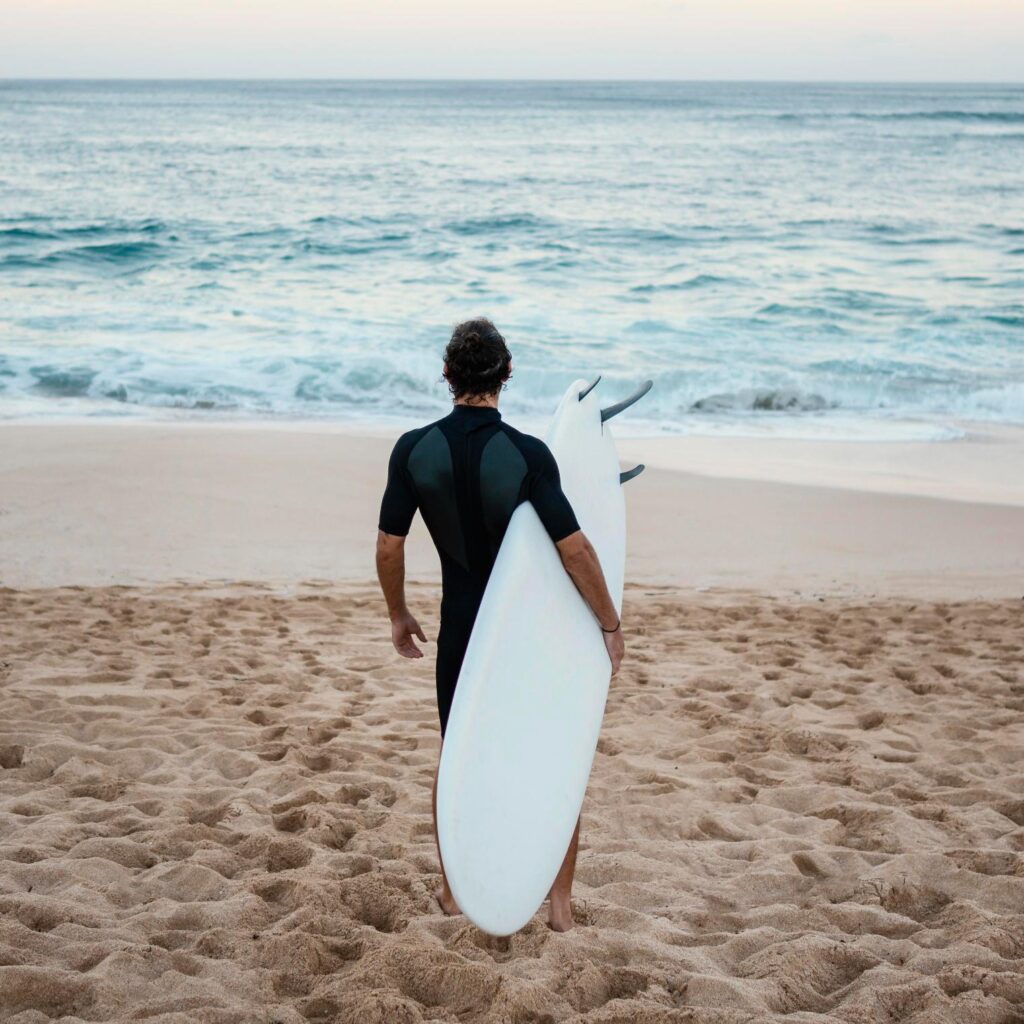
Check the Weather and Surf Forecast
The power of knowledge is in the mind, so the first step is to make sure you are checking forecasts. Apps and websites such as Surfline or Magicseaweed offer real-time information regarding the size of the waves, wind speed, and tide conditions. you can also check out our website for additional information tips and gears .
Watch out for warnings such as strong winds or substantial swell increases, which could make the ocean extremely dangerous.
Know the Local Spot
Each surf break is different. Rocks, currents, and wave patterns may differ significantly between beaches. Be sure to take time to study the waters before you head out to paddle. Chat with locals and lifeguards, who can provide important information on specific hazards within the vicinity.
Gear Up Appropriately
The right equipment could help you live a better life.
- Leash: Make sure your leash for surfing is sturdy and secure.
- Wetsuit or rash Guard: A wetsuit suitable for the water’s temperature will protect you from hypothermia. A protective rash guard helps prevent scratches.
- Helmets: In rocky or reef-prone areas, wearing a helmet could help prevent serious injuries.
- Buoyancy Aid While it’s not a standard feature for all surfers, buoyancy aids could help ensure safety in rough water.
Practice Ocean Awareness Skills
If you’re planning to take on challenging conditions, you should hone your breathing and swimming abilities. To increase your confidence, learn to duck dive under waves and paddle against currents.
Bring a Buddy
This buddy system doesn’t have to be only for beginners. Having someone monitor your back while you’re in the line gives you an extra layer of protection. If you are in difficulties, your buddy will assist you or notify others for assistance.

In the Water: Navigating Challenges Safely
Assess Before You Paddle Out
Consider evaluating the surfing zone from the shore. Check for any potential hazards, such as coral heads or rocks, and determine which areas are consistently breaking. Pick a point of entry that is away from breaking waves and tear currents.
Respect Rip Currents
They are one of the main hazardous elements that can occur in the rough conditions of oceans. If you are caught in one, be aware of these crucial steps:
- Don’t panic: Stay calm and preserve your energy.
- Swimming Parallel Shore: Paddle across the current, but not against it until you’re entirely free.
- Signal for Assistance: If you can’t escape, you can wave your arms to signal others.
Position Yourself Smartly
Don’t sit too much inside of the zone that breaks, as this is where the waves are at their most potent unless you’re confident about your abilities to manage the waves. Putting yourself slightly out of the break allows you to take your time and paddle into the waves that you would like to capture.
Time Your Movements
Timing is crucial in rough weather. Be aware of the sets to spot patterns and then paddle out during periods of lulls when waves aren’t as frequent. Also, choose your waves carefully to be safe from being sucked in by unexpected, larger sets.
Stay Calm in a Wipeout
Wipeouts in rough waves are not uncommon, even for the most skilled surfers. If it occurs:
- Guard Your Head: Use your arms to protect your head from the board or any underwater dangers.
- Allow the Wave to Ride: Resist the urge to fight the wave; instead, relax and let it take you away before it comes back.
- Take Control of Your Breathing: When you come back to your feet, Be relaxed and take deep, slow breaths.
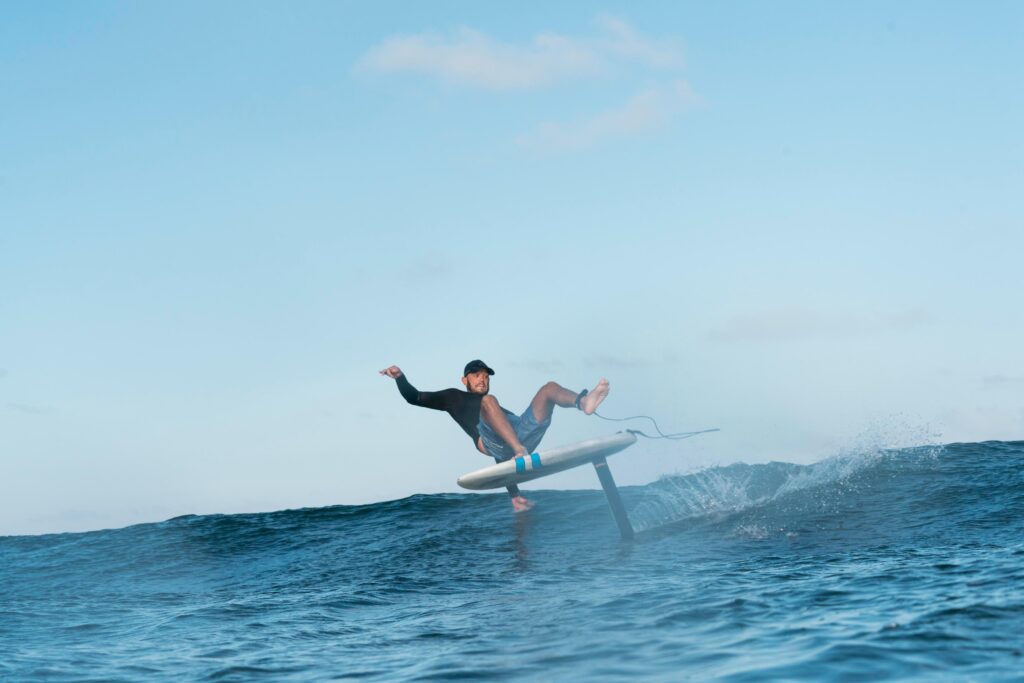
Post-Wipeout Recovery
Being able to recover from a crash in rough seas requires mental and physical strength. After being tossed around into the sea by waves, take these steps to regain control:
Assess Your Position
When you are on the surface, swiftly get yourself oriented. Be aware of any waves coming in on your board, as well as any potential hazards. If your leash remains in good shape your board will be floating close by and could use as a floating device.
Regain Your Focus
It’s normal to feel shaken after a traumatic accident; however, regaining your composure is crucial. Breathe slowly and deeply to calm your heart and regain your confidence.
Paddle to Safety
If you’ve slipped into a hazardous zone–such as close to the shore or in a rip-current, paddle gently but carefully toward a safe area. If you’re swimming in the current, concentrate on paddling in a diagonal direction or parallel to the shore instead of battling directly against it.
Monitor Your Energy Levels
The harsh conditions can be exhausting, so pay attention to your physical and mental energy. If you feel tired, head back to the shoreline for a rest. Inadequately estimating your endurance can result in risky situations.
Mental Toughness: Mastering Your Mindset
The rough terrain you encounter isn’t just a physical exercise; It’s also an intellectual one. Doubt, fear, or trepidation can affect your judgment and cause mistakes. Here’s how to stay focused:
Visualize Success
Before you go out on the water for the first time, visualize successfully catching waves and dealing with difficult situations. Positive visualization will help you remain in the right mindset and remain confident.
Stay Present
In the water, you should focus on the job that is in front of you. Don’t dwell on the possibility of something going wrong. Mindfulness practices, such as breathing deeply, can help you remain in the present.
Learn from Every Session
Each time you go surfing under challenging conditions, you learn valuable lessons. Review what you learned and the areas you could work on to boost your confidence going into future sessions.
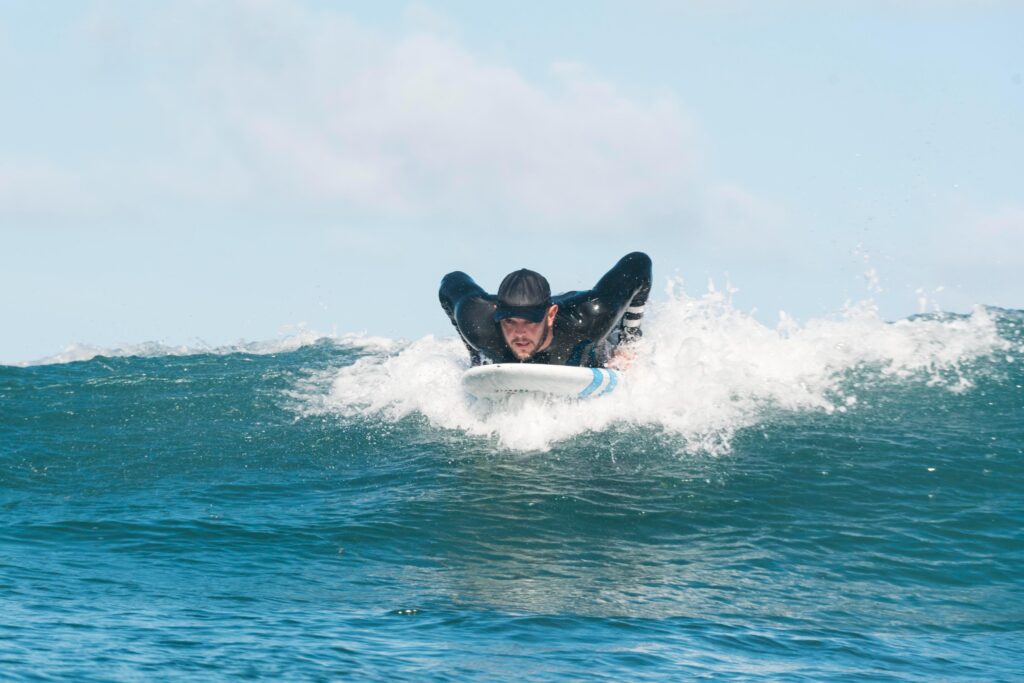
Recognizing When to Call It Quits
One of the most difficult choices for surfers is deciding when to get off the water. Pushing yourself to the limit is a part of growing, but there’s a line between pushing yourself and putting yourself in danger.
Listen to Your Instincts
If you’re feeling anxious or overwhelmed, go with your instincts. The ocean can be a bit unpredictable, and it’s safer to leave earlier than to expose yourself to greater risk.
Assess Changing Conditions
The rough ocean conditions can get worse rapidly. If you see an increase in winds, rising swells, or a change in the direction of currents, It could be the right time to return to the shore.
Acknowledge Your Limits
There’s no excuse for admitting that the conditions aren’t at your current level of skill. The option of surfing for an additional time is the more secure and more efficient choice.
Post-Session Recovery and Safety
After having fought through rough ocean conditions, it’s crucial to prioritize recovering:
Rehydrate and Refuel
Surfing in challenging waters burns significant energy. To help recover, rehydrate yourself by drinking water or electrolytes and replenishing your energy with a healthy snack.
Inspect Your Gear
Check your leash, surfboard, and wetsuit for damages that you may have sustained during your session. Minor damage can turn into larger issues if unchecked.
Review Your Performance
Review your time. What was your best performance, and what can you do better next time? This kind of reflection is essential to continuing development as an athlete.
The Role of Fitness in Surfing Rough Waters
Physical fitness can significantly increase one’s capacity to cope with difficult ocean conditions. A healthy body will allow one to paddle for longer, recover quicker, paddle faster, and surf more efficiently.
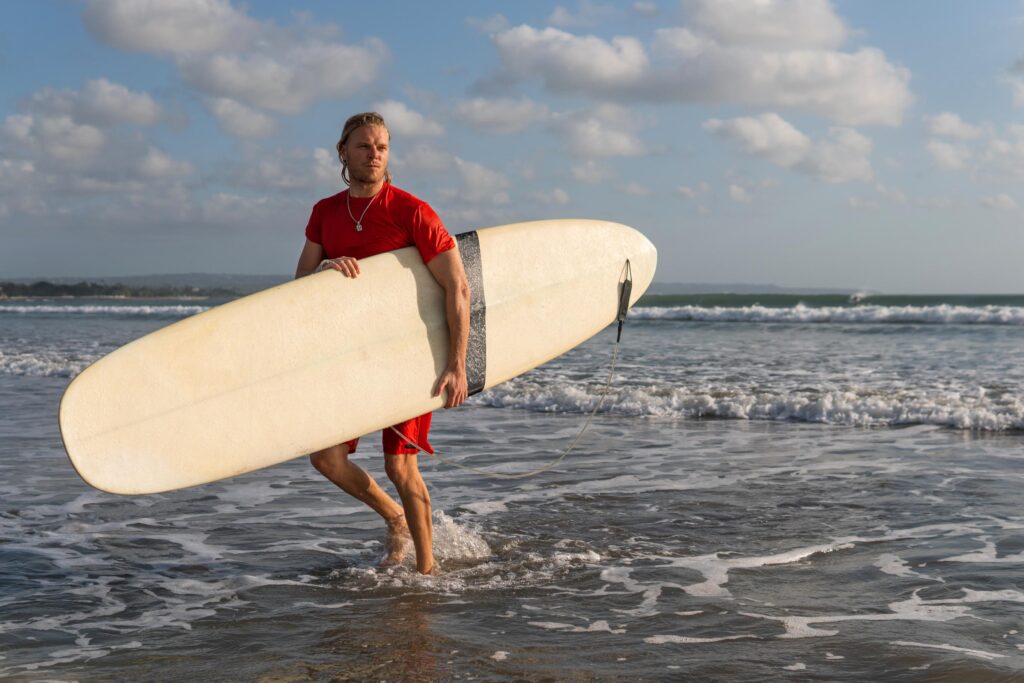
Focus on Core Strength
The muscles in your core are essential to maintaining balance and stability while on a board. Training exercises like planks, Russian twists, and yoga can build strength in this area.
Build Upper Body Endurance
Paddling through strong surf requires muscles in the shoulders, arms, and back. To increase endurance, include rowing or swimming in your workout routine.
Improve Flexibility
Surfing requires quick, agile movements. Regular stretching and yoga improve flexibility and decrease the chance of sustaining injuries.
Work on Cardio Fitness
A strong cardiovascular system can help keep you energized throughout long workouts. Cycling, running, or interval training can also increase endurance.
Advanced Tips for Experienced Surfers
For experienced surfers, getting into rough waves is a chance to test the limits. But even the most experienced surfers are able to benefit from the latest techniques for safety:
Study Wave Mechanics
Advanced surfers benefit from knowing the science behind wave formation, including how swells, tides, and winds interact. This understanding lets them forecast and adapt to changes more quickly.
Use Advanced Maneuvers Wisely
Techniques like bottom turns and cutbacks can assist you in controlling the speed and direction of your boat in the midst of a pounding surf. Learn these techniques in more relaxed conditions before trying them in a rough sea.
Consider a Safety Vest
Although more commonly used when surfing big waves, inflatable safety vests offer peace of mind and additional buoyancy when surfing in rough conditions.
Understanding the Importance of Ocean Etiquette
In a rough ocean, following the appropriate surfing behavior becomes more crucial. Respecting fellow surfers and knowing the rules that are not stated in the lineup will prevent accidents and ensure everyone’s safety.
Respect Priority
When surfing, the one that is closest to the breaking point in the surf (the top) gets the benefit of using the right of the way. Be careful not to slam into another’s wave, mainly when conditions are rough, and collisions are more likely to be fatal.
Communicate Clearly
Utilize hand signals and verbal cues to signal your intentions, such as “Going left” or “Paddling out.” Clear communication will help avoid mishaps and misunderstandings when surfing in rough waters.
Avoid Hogging Waves
Be fair with the waves, particularly when the line is packed. Be kind to fellow surfers and ensure that everyone has an opportunity to enjoy the time.
Be Aware of Your Surroundings
Pay attention to swimmers, surfers, and other obstacles. Be aware of the dangers of avoiding collisions and maintaining a peaceful group.
Emergency Preparedness: What to Do If Things Go Wrong
Even with the best planning, emergencies can occur when the ocean is rough. Being prepared for these scenarios can be crucial.
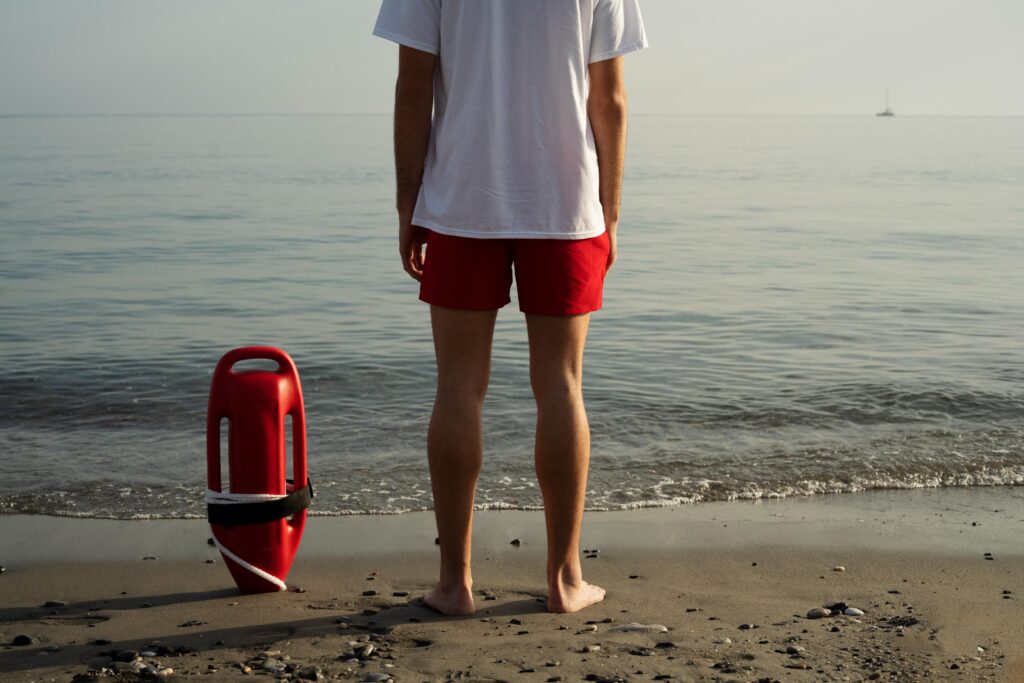
Signal for Help
If you’re experiencing trouble, use universal signals such as shaking your arms or waving them to draw the attention of lifeguards or other surfers.
Conserve Energy
If you’re stuck in a stressful situation like being sucked in the water by waves, you must focus on preserving energy. Be calm, relax your body, and then wait for the turbulence to ease before returning to the surface.
Know CPR and First Aid
Learn basic CPR and first aid techniques. If you encounter a serious incident, such as a near-drowning, training could save your life.
Carry a Safety Device
For advanced surfers and those who want to tackle remote breaks, a personal safety device such as a waterproof whistle or a locator beacon is a great idea.
Plan an Exit Strategy
Before stepping into the water, consider possible exit points. Having a clearly defined strategy for returning to shore will save time in the event of an incident.
Stories of Triumph and Lessons Learned
All over the world, surfers have encountered rough ocean conditions and had to tell their stories.
Although we don’t want to go into specific stories, they often highlight the importance of preparing respect for nature and support from the community.
Many experienced surfers will remember their first experience with huge waves as a moment of humbling, which taught them the importance of perseverance and flexibility.
These lessons, usually hard-earned, remind them of the necessity to improve their techniques continually and appreciate the unpredictability of the sea.
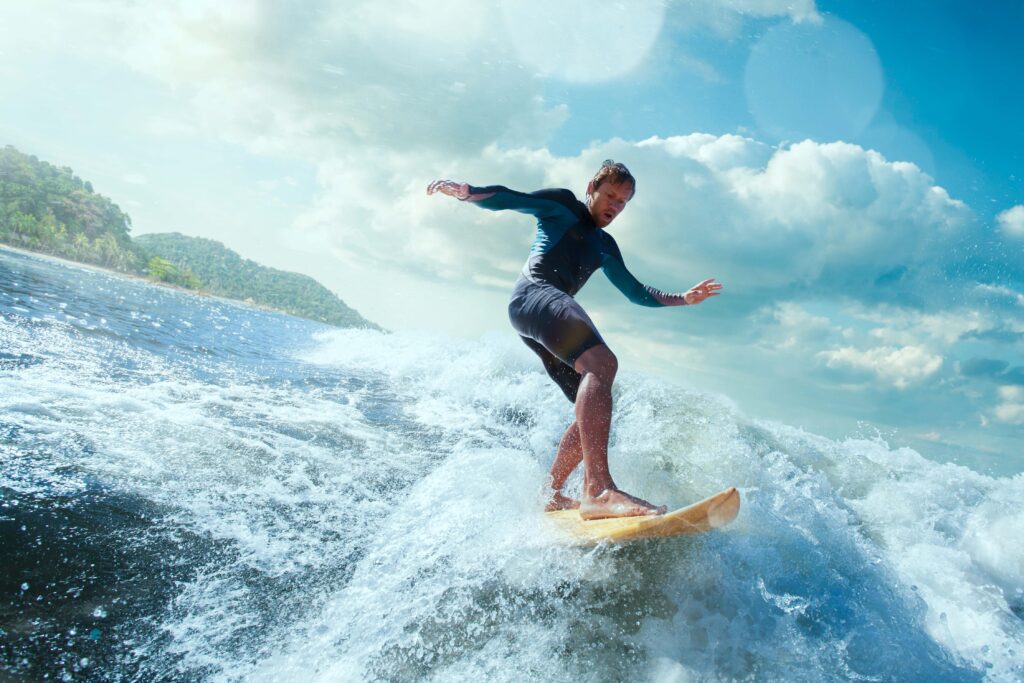
Final Thoughts
Surfacing rough sea conditions can be an exciting exercise that tests your skill, endurance, strength, and bravery.
By properly preparing, respecting the ocean, and maintaining a safety-first mentality and attitude, you will be able to tackle the waves confidently and minimize risks.
Remember that the ocean can be both a playground and a teacher. Each session, regardless of how complex, provides opportunities to grow and discover.
Suppose you’re a pro at ripping currents, dealing with wipeouts, or riding the largest waves of your existence. In that case, the most important thing is to approach every experience with respect, humor, and a desire for the process of learning.
Stay safe, surf smart, and allow the waves to invigorate you.



